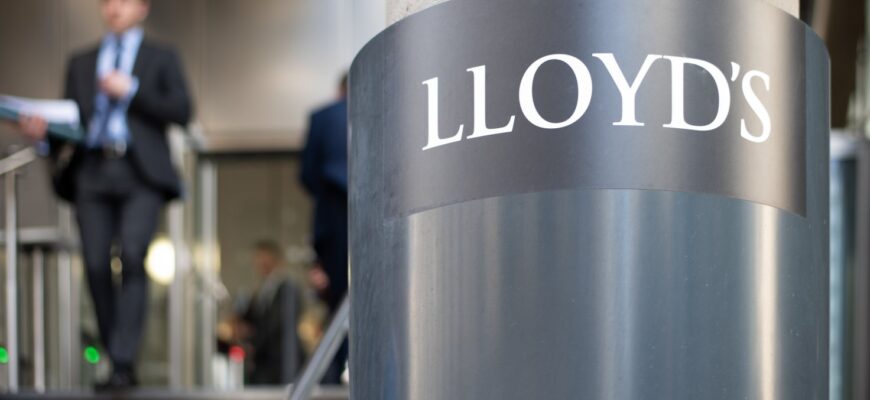- Lloyd’s of London: A Detailed History and Development
- The Birth of Lloyd’s Coffee House
- Expansion into Marine Insurance
- The Birth of the Lloyd’s Names
- The Formation of Lloyd’s Corporation
- Growth and Global Expansion
- Today: Market Structure and Operations
- Catastrophic Events
- Technological Advancements and Modernization
- Regulatory Oversight and Compliance
- Innovation
- Conclusion
Lloyd’s of London: A Detailed History and Development
Lloyd’s of London, a renowned insurance marketplace, has played a pivotal role in shaping the global insurance industry. This article provides a comprehensive exploration of the history, development, and significance of Lloyd’s in the context of London’s insurance market. From its humble beginnings as a coffee house to its evolution into a global powerhouse, Lloyd’s has consistently demonstrated its ability to adapt, innovate, and provide specialized insurance solutions.
The Birth of Lloyd’s Coffee House
In 1688, Edward Lloyd opened a coffee house in London’s Tower Street, which became a popular meeting place for merchants, sailors, and shipowners. Lloyd’s Coffee House served as an informal hub for exchanging maritime news, ship auctions, and marine insurance discussions. It quickly gained a reputation as a reliable source of information for those involved in maritime trade.

Expansion into Marine Insurance
As Lloyd’s Coffee House became a gathering place for individuals involved in maritime ventures, it naturally evolved into a center for marine insurance. In the 18th century, Lloyd’s began hosting auctions where underwriters would offer to insure ships and cargoes against various risks. This marked the formalization of Lloyd’s as an insurance marketplace.
The Birth of the Lloyd’s Names
In the 19th century, individual members, known as “Names,” started participating in the Lloyd’s market by personally assuming liability for insurance risks. Names were wealthy individuals who provided capital to support insurance transactions. This unique risk-sharing model allowed Lloyd’s to underwrite significant risks, including those associated with groundbreaking projects like the construction of railways and the Suez Canal.
The Formation of Lloyd’s Corporation
In 1871, Lloyd’s underwent a significant transformation with the formation of the Lloyd’s Corporation, known as the Society of Lloyd’s. This corporate structure provided a legal framework for the market’s operations, ensuring that transactions were conducted in an organized and regulated manner. The Corporation assumed responsibility for managing the affairs of Lloyd’s and safeguarding the interests of its members.
Growth and Global Expansion
Throughout the 20th century, Lloyd’s expanded its operations globally, attracting business from around the world. It became synonymous with insuring complex and high-value risks. Lloyd’s solidified its position as a global insurance marketplace, with syndicates specializing in various lines of insurance, including marine, aviation, property, and casualty.
Today: Market Structure and Operations
Lloyd’s of London operates under a unique market structure. It consists of multiple individual underwriting syndicates, each managed by a syndicate manager. These syndicates are responsible for assessing risks, setting premiums, and underwriting policies. The Lloyd’s market operates on an open trading floor, where brokers negotiate and place insurance coverage on behalf of clients.
Catastrophic Events
Lloyd’s has proven its resilience in the face of catastrophic events throughout its history. From major maritime disasters to large-scale natural disasters, Lloyd’s has played a crucial role in providing coverage for significant losses. Notable events include the San Francisco earthquake in 1906, the sinking of the Titanic in 1912, and more recently, the terrorist attacks of September 11, 2001.
Technological Advancements and Modernization
Lloyd’s has embraced technological advancements to enhance its operations and efficiency. In recent years, it has invested in digital platforms, automation, and data analytics to streamline processes and improve risk assessment. These technological advancements have facilitated faster transactions, improved underwriting capabilities, and enhanced customer experiences.

Regulatory Oversight and Compliance
To maintain market integrity and protect policyholders, Lloyd’s operates under a robust regulatory framework. The Corporation is regulated by the Prudential Regulation Authority (PRA) and the Financial Conduct Authority (FCA). These regulatory bodies ensure that Lloyd’s maintains adequate financial resources, follows sound underwriting practices, and meets stringent solvency requirements.
Innovation
Lloyd’s has always been at the forefront of insurance innovation. It continues to adapt to emerging risks, offering coverage for new technologies, cyber risks, and environmental challenges. Lloyd’s also encourages innovation through initiatives like the Lloyd’s Lab, which fosters collaboration between start-ups and insurance professionals to develop cutting-edge solutions.
Conclusion
Lloyd’s of London has a rich history and a storied legacy in the global insurance industry. From its humble beginnings as a coffee house to its position as a leading insurance marketplace, Lloyd’s has consistently demonstrated its ability to evolve, adapt, and thrive. With its unique market structure, commitment to innovation, and global reach, Lloyd’s continues to shape the future of insurance while upholding its reputation for excellence and reliability.









